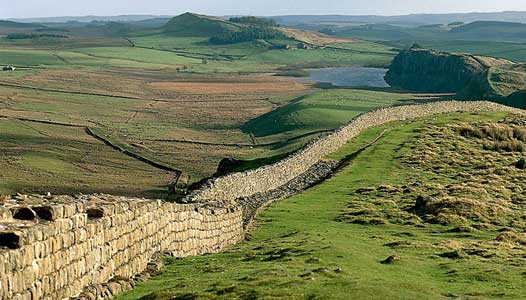Hadrian's Wall
Hadrian’s Wall was ordered to be built by the emperor Hadrian in the 2nd Century. It was designed to keep the Picts - the name of the Scottish warriors - from crossing into northern England, which was ruled by the Romans at the time. The Picts had become a serious problem for the Romans, regularly crossing into England to start battles or raid settlements.
The wall was built from stone in AD 122 and was 73 miles long, running from Wallsend-on-Tyne in the east to Bowness on the Solway Firth in the west. In parts it is large enough for two soldiers to do sentry duty side by side. The Romans built a special road - which was called the Stanegate - so that both soldiers and supplies could easily be sent up to Hadrian’s Wall.

To bolster the defences of the wall, the Romans built a mile castle every 1,500 meters (roughly). These mile castles would house around 20 soldiers who could keep watch to ensure no forces attacked from the north. But that’s not all - larger forts would also be built at around eight kilometres apart, which would house anything between 500 and 1,000 soldiers as well as important supplies and food.
Although it was designed by skillful engineers, Hadrian’s Wall was actually built by the Roman soldiers themselves - as well as being skilled in combat these men were also well trained when it came to constructing walls, forts and roads. Indeed, the fact that the wall still remain in the north of England today, albeit only partially, is a testament to the quality of the job the Romans did in constructing it.
On three different occasions the Picts attempted to destroy the wall but each time the Romans would rebuild the section that had been attacked. Hadrian’s wall was constantly patrolled and guarded for almost 250 years, marking the northern border of the vast Roman Empire.
See also:
MLA Citation/Reference
"Hadrian's Wall". HistoryLearning.com. 2025. Web.
